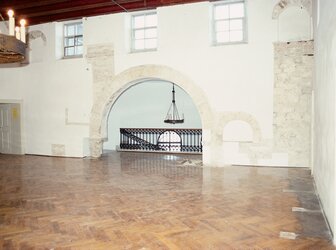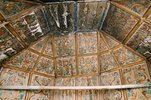St. Martin's Chapel in Stari Brod
Despite all the changes to the traditional way of life, a !arge number of traditional villages with unique wooden architecture is preserved in northern Croatia. Wooden chapels on natural hills, safely located above the surrounding flood areas of local rivers, also belong to this ...
Read more
Project details
| Title: | St. Martin's Chapel in Stari Brod |
|---|---|
| Entr. year: | 2017 |
| Result: | Award |
| Country: | Croatia |
| Town: | Stari Brod, near Sisak |
| Category type: | building conservation |
| Building type/ Project type: | Religious building/memorial |
| Former use: | Chapel, gathering place |
| Actual use: | Chapel, cultural attraction |
| Built: | 17th century |
| Architect / Proj.leader: | Croatian Conservation Institute |
| The Jury's citation: | “This exemplary project has placed great importance in Croatia’s vernacular architecture, an aspect of the country’s heritage which has faced a decline in previous centuries. The delicate and fragile architecture has been respectfully and sensitively handled, and has enhanced the painted jewel-box like quality of this chapel”. “The excellent conservation of the painting is especially commendable, along with the way in which local craftspeople, the owners, and the community were encouraged to participate in the conservation process”. |
| Web, Links: | www.h-r-z.hr/en/index.php/djelatnosti/konzerviranje-restauriranje/drvena |
Description:
Despite all the changes to the traditional way of life, a !arge number of traditional villages with unique wooden architecture is preserved in northern Croatia. Wooden chapels on natural hills, safely located above the surrounding flood areas of local rivers, also belong to this group. The wooden chapel of St. Martin in Stari Brod is a rare example of a traditional Baroque folk architecture with a completely preserved painted interior. Before the conservation and restoration, the chapel was in a dilapidated state: planks of painted wooden paneling were partially rotted, bent and cracked due to Iong-term exposure to high humidity, while deposits of tannin, binder, pigment and dirt were visible in the form of dark spots on the painted sides of the planks. The proper conservation and restoration of the chapel enabled the preservation of all of its important traditional and historical features. lts preservation is of the utmost importance for the local community since the chapel represents the main gathering site during funerals and processions, and, because of its age, it represents a strong symbol of multi-centennial survival of the village in spite of all the wars and floods.
Similar projects

1800-1200 BC

4th century BC

17th century

5th-18th century


17th century

6th century

15th century





